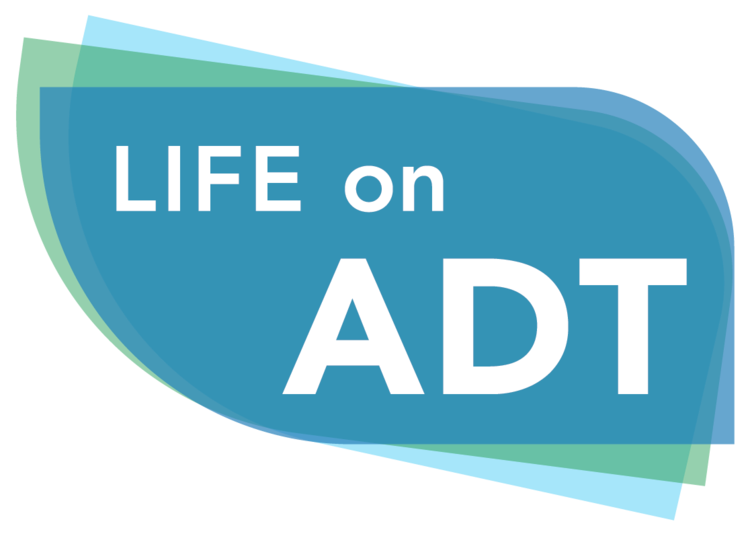THE ADT BOOK
Photo credit: Felice Swanson
What is Androgen Deprivation Therapy (ADT)?
ADT (also known as hormonal therapy) is prescribed for prostate cancer patients prior to potentially curative treatment such as radiotherapy. It is also offered those experiencing a rise in PSA after an initial curative treatment, and those whose cancer has spread outside of the prostate at the time of diagnosis. Some common drugs used for ADT are Lupron®, Zoladex®, Eligard®, Suprefact®, Firmagon®, Xtandi®, and Nubeqa®. These medications help control prostate cancer growth by reducing testosterone in the body. However the depletion of testosterone has a number of side effects that can negatively impact the quality of life of both patients directly and their partners indirectly.
Photo credit: Felice Swanson
Why we created the ADT Book
Through our research, we discovered that prostate cancer patients starting on ADT and their family members were not well-informed about side effects and how to manage them. Their lack of knowledge about ADT, in turn, limits them from taking appropriate actions to reduce or prevent the negative impact of ADT. We created the ADT Book to help inform patients about what to expect when starting this treatment, and how to maintain good health and quality of life while on ADT.
The ADT Book has been tested in a national study in several major cancer centres across the country.
What is the ADT Book?
Androgen Deprivation Therapy: An essential guide for men with prostate cancer and their loved ones is a book for both prostate cancer patients starting on ADT and their loved ones. The ADT Book presents all of the known side effects of ADT, as well as the established evidence-based management strategies for dealing with those side effects. The book addresses adverse physiological effects, such as weight gain, muscle loss, bone mineral density, and risk for diabetes, and cardiovascular disease. As well, ADT can impact patients’ mood, energy level, erectile function, and libido. Men may also lose body hair (arms, legs and torso) and experience genital (penis and testicular) shrinkage. All of these side effects are discussed in this volume.
The book is genuinely a workbook for both patients and partners; it is not just a text outlining side effect management strategies. Thus all of the major chapters have specific exercises to help patients implement management strategies and make specific lifestyle changes. Exercises are also included to help patients and partners to stay close, both emotionally and physically, even when ADT suppresses the patients’ sexual interest and function. There are suggestions for how to remain sexually active despite changes in sexual function and reduced interest in sex. At the same time we recognize that not all men on ADT are partnered and the book addresses their needs as well.
A French version of the ADT Book is now available at puq.ca.
Action Plans from the ADT Book
ACTION PLAN - WORKSHEET
Throughout the ADT book there are suggestions for changes that will help you and your partner maintain a high quality of life while on ADT. An Action Plan is a structured way to help you be clear about your goals and increase the likelihood that you will follow through on your plans.
Below is an example of an Action Plan and a blank copy that you can fill out yourself. It helps to be as specific as possible when you are making your action plan. To download a printable copy of an Action Plan, please click here.
ACTION PLAN – EXAMPLE
ACTION PLAN: Walking
What I plan to do: Walk for 15 minutes, 3 times a week
When I plan to do it: Monday, Wednesday and Friday after work
Who I might do it with: With my wife and/or with my dog
Why my plan is important: To help control my health risks and reduce fatigue
Where I plan to do it: Around my neighborhood
What might get in the way? Poor weather - so I will go to the mall to walk
ACTION PLAN – BLANK
ACTION PLAN: ___________________________________________________
What I plan to do: ___________________________________________________
When I plan to do it: ___________________________________________________
Who I might do it with: ___________________________________________________
Why my plan is important: ___________________________________________________
Where I plan to do it: ___________________________________________________
What might get in the way? ___________________________________________________


